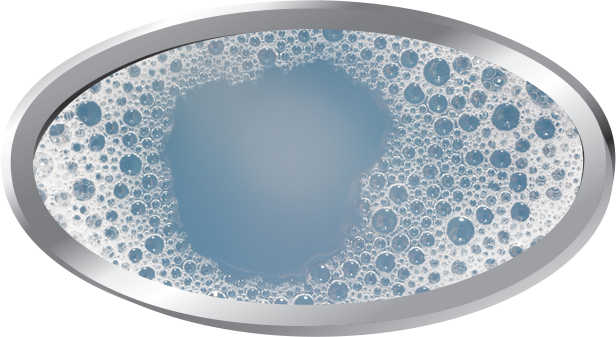The Importance of Defoamers in Industrial Processes and Applications
The Importance of Defoamers in Industrial Processes and Applications
Blog Article
Picking the Right Defoamer for Your Certain Application Demands
Picking the appropriate defoamer for details application requirements is a nuanced procedure that requires careful consideration of several aspects, such as the foam kind, tool, and operating problems. Understanding the nuances of defoamer performance-- including speed and determination-- while likewise making up ecological and regulatory elements is critical. Furthermore, involving in tests and talking to makers can provide important insights. Nonetheless, browsing these intricacies can be daunting, and the repercussions of a poor option might be substantial. What approaches can be utilized to guarantee an ideal selection?
Recognizing Foam Development
Foam formation happens when gas is caught within a fluid, developing a secure structure of bubbles. This phenomenon can considerably influence numerous industrial procedures, particularly in markets such as food production, drugs, and wastewater treatment. The presence of foam can hinder mixing, reduce product top quality, and also lead to functional inadequacies.
Foam usually creates as a result of a combination of factors, consisting of surface-active representatives, anxiety, and the qualities of the liquid phase. Surfactants lower the surface area stress of the liquid, promoting the development of bubbles that can coalesce and maintain. Anxiety, whether from mechanical mixing or gas intro, improves bubble development, leading to boosted foam quantity.
Recognizing the auto mechanics of foam formation is essential for sectors intending to optimize their procedures. By determining the certain conditions that promote foam generation, organizations can execute approaches to alleviate its effects.
Kinds Of Defoamers Available
Different sorts of defoamers are offered to address the obstacles positioned by foam in industrial applications. defoamers. Extensively identified, defoamers fall right into three groups: silicone-based, non-silicone-based, and natural defoamers
Silicone-based defoamers are renowned for their efficiency and stability throughout a large range of temperatures and pH degrees. They are commonly made use of in applications where solid foam suppression is essential, such as in paints, adhesives, and finishings. Their reduced surface area tension permits fast foam collapse.
Non-silicone-based defoamers, often made from natural compounds, provide a choice for applications conscious silicone deposits. These defoamers can be additional divided right into polyether and ester types, each tailored to satisfy certain formula requirements. Non-silicone defoamers are often used in food processing and personal treatment items as a result of their compatibility with various formulations.
Natural defoamers, stemmed from plant or animal sources, are getting grip as a result of their environment-friendly account. These items are especially appealing in applications where regulatory conformity and sustainability are critical, such as in agrochemicals and biotechnology.
Picking the best type of defoamer is essential for enhancing efficiency and making sure compatibility with specific applications.
Trick Application Considerations
When selecting a defoamer, it is necessary to think about the details application demands to guarantee ideal performance. defoamers. Various industries have unique demands, such as food handling, pharmaceuticals, or wastewater treatment, and each application might require special defoaming buildings
Key factors to review consist of the tool in which the defoamer will certainly be utilized, whether it is water-based, oil-based, or a mix thereof. The temperature and pH degrees of the application can additionally considerably affect the efficiency of a defoamer. Furthermore, compatibility with other chemicals existing in the system is important to protect against unfavorable responses that could jeopardize efficiency.
Another crucial consideration is the foaming habits of the particular system. Recognizing whether the foam develops promptly or gradually can assist the option of a defoamer that targets the origin cause properly. The wanted rate of defoaming can influence the choice, as some applications need rapid action while others may endure slower defoaming procedures.
Last but not least, regulative and ecological considerations must not be forgotten, especially in industries with strict conformity requirements. Choosing a defoamer that aligns with these factors makes sure both effectiveness and safety in the application.

Efficiency Testing Techniques
Examining the efficiency of a defoamer needs a systematic technique to screening that accurately measures its effectiveness in certain applications. Different efficiency screening methods can be used to identify the optimal defoamer for an offered formula.
One usual method is the bubble examination, which assesses the defoamer's ability to minimize foam quantity gradually. This test includes creating a steady foam and after that including the defoamer to observe the price of foam collapse. One more approach is the vibrant foam examination, where foam is produced under regulated problems to mimic real-world application situations. This strategy offers insights right into exactly how the defoamer carries out under differing shear problems.

Eventually, selecting the ideal performance testing method depends upon the particular have a peek at this site application and the kind of foam being addressed. Each method offers important information that can lead formulation changes and boost the performance of the defoamer in functional applications.
Finest Practices for Selection


Following, consider the defoamer's efficiency in terms of rate of activity and determination. A quick-acting defoamer may be needed for processes where fast foam suppression is important, while a much more persistent formulation could be required for long term foam control. In addition, evaluate the ecological influence of the defoamer, including its biodegradability and any type of regulatory compliance needs.
Conduct tests with chosen defoamers to identify their efficiency in real-world problems. By sticking to these best practices, you can boost foam control effectiveness and guarantee the durability of your processes.
Final Thought
In recap, choosing the suitable defoamer necessitates an extensive examination of various variables, consisting of foam type, tool, operating conditions, and ecological considerations. Comprehending the one-of-a-kind attributes of foam formation and the available defoamer options is essential. Furthermore, utilizing effective performance screening approaches and sticking to ideal techniques during the option procedure will improve the possibility of attaining optimum defoaming results. Ultimately, a well-informed option technique will certainly address certain application demands and minimize lathering challenges view it now effectively.
Selecting the appropriate defoamer for specific application requirements is a nuanced process that demands mindful factor to consider of numerous variables, such as the foam medium, kind, and operating problems.Selecting the right defoamer is crucial for accomplishing optimal performance in foam control applications. A quick-acting defoamer might be needed for processes where fast foam suppression is critical, while an extra relentless formulation might be needed for extended foam control.In recap, selecting the ideal defoamer necessitates a comprehensive examination of various elements, including foam type, tool, operating conditions, and environmental factors to consider. Comprehending the distinct qualities of foam formation and the readily available defoamer choices is crucial.
Report this page